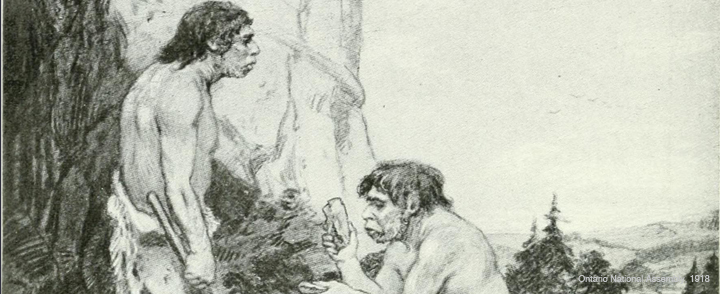By Janis Siegel, Jewish Sound Columnist
The next time you question someone’s place on the evolutionary chain by calling that person a Neanderthal, it might be wiser to look elsewhere, a team of scientists led by Israeli researchers have found.
As it turns out, we humans share 99.84 percent of our genetic makeup with the now-extinct Neanderthal and the Denisovans, another ancient hominid species also studied by the group that separated from modern-day homo sapiens sometime between 700,000 and 300,000 years ago and became extinct about 40,000 years ago, say scientists.
The 0.16 fraction of a percent, a mere 100 amino-acid sequence, accounts for huge differences between the modern and prehistoric human and are mainly related to disease, particularly in the brain and neurological diseases.
“More than a third of the disease-linked genes, 30/81, are involved in neurological and psychiatric disorders,” wrote researchers.
Hebrew University of Jerusalem computational biologist Liran Carmel and stem cell biologist Eran Meshorer of the Alexander Silberman Institute of Life Sciences at HU, along with researchers from Germany and Spain, reconstructed the full genomic maps from ancient species of early humans, the Neanderthals and Denisovans.
In the study, “Reconstructing the DNA Methylation Maps of the Neanderthal and the Denisovans,” published in May 2014 in the online journal Science, researchers found that certain genes were turned on and off by the external environment’s effects upon genes and disease progression, and not through changes to DNA.
Looking for methylation, a common signaling method used by cells to set genes to the off position in several cellular processes, researchers compared the gene maps of the ancient species to the modern human genome.
Using bone methylation samples, bone stem cells, and bone samples from a mix of healthy patients and patients with osteoporosis and osteoarthritis, the researchers were able to observe how minute differences can create vastly different results. One of the striking observations was that even though there are such scant genetic differences found between early humans and modern humans, they were nevertheless responsible for fundamental changes in the body type and the general size differences of both groups of humans.
Additionally, the researchers found that modern humans became vulnerable to neurological diseases and other diseases that are now found in humans but were not in Neanderthals.
The research provides the first insight into the evolution of gene regulation in human evolution, adding more evidence to the idea that one of the most important distinctions between ancient and modern humans is in brain development.
Despite our common genetic profiles, say researchers, modern humans diverged and survived extinction due to adaptations in their brains.
“On the negative side, the researchers found that many of the genes whose activity is unique to modern humans are linked to diseases like Alzheimer’s disease, autism and schizophrenia,” said an HU press release on the study, “suggesting that these recent changes in our brain may underlie some of the psychiatric disorders that are so common in humans today.”
One example that particularly interested researchers was the TBX15 gene. TBX15 is responsible for skeletal features and regulates many parts of the skeleton, such as “stature, limbs, shape of the cranium and facial features.”
“Mutations in this gene are behind the Cousin syndrome,” said the study, “whose symptoms include short stature, cranial malformations, facial dimorphism, limb abnormalities, misshaped foramen magnum and more. This gene is un-methylated in present-day humans, but hyper-methylated in both archaic humans.”
Researchers, however, caution that this syndrome cannot be definitively associated with the mutation because it was not found in all 37 samples they used and is also found in varying degrees in humans alive today.
“Numerous changes were also observed in the immune and cardiovascular systems, whereas the digestive system remained relatively unchanged,” said the study.
Researchers cautioned that more research is needed and that other factors including diet and environment and variations between individuals make it “impossible to determine whether the distinct epigenomic on/off patterns found in Neanderthal genes are typical of the species overall or peculiar to the individual subject studied.”
Longtime JTNews correspondent and freelance journalist Janis Siegel has covered international health research for SELF magazine and campaigns for Fred Hutchinson Cancer Research Center.
